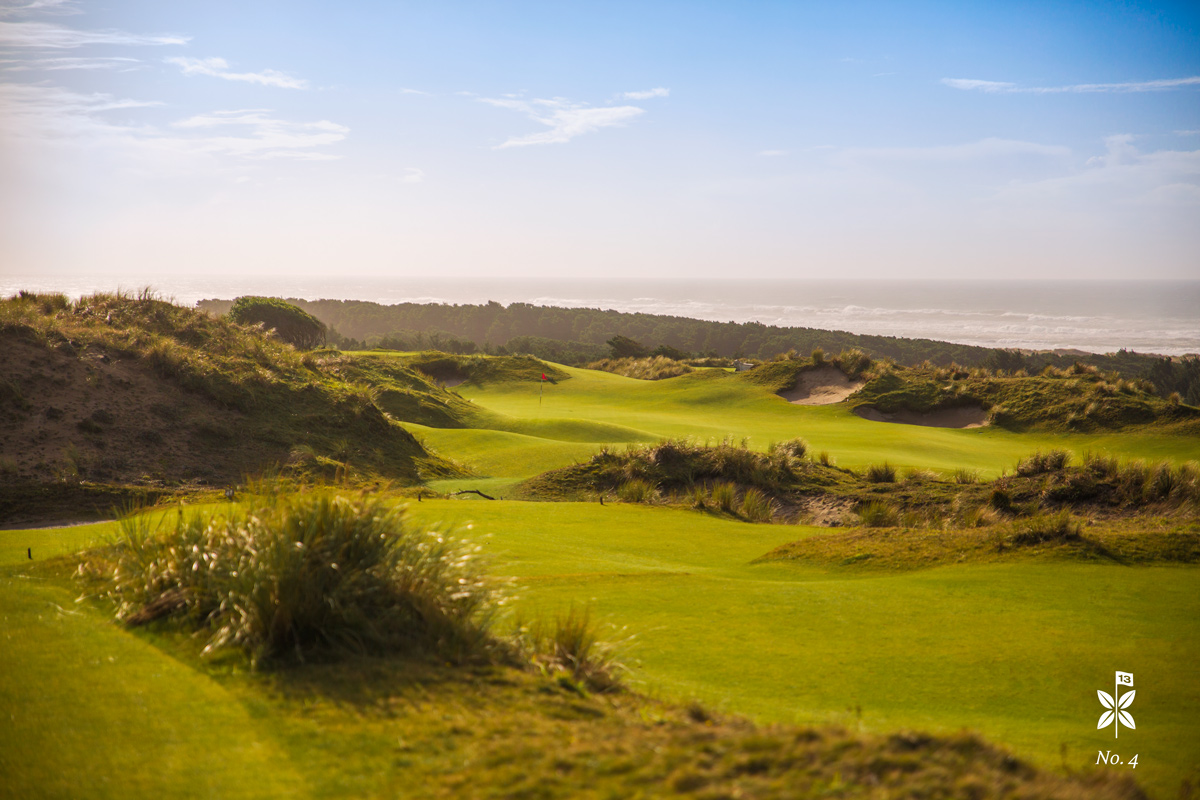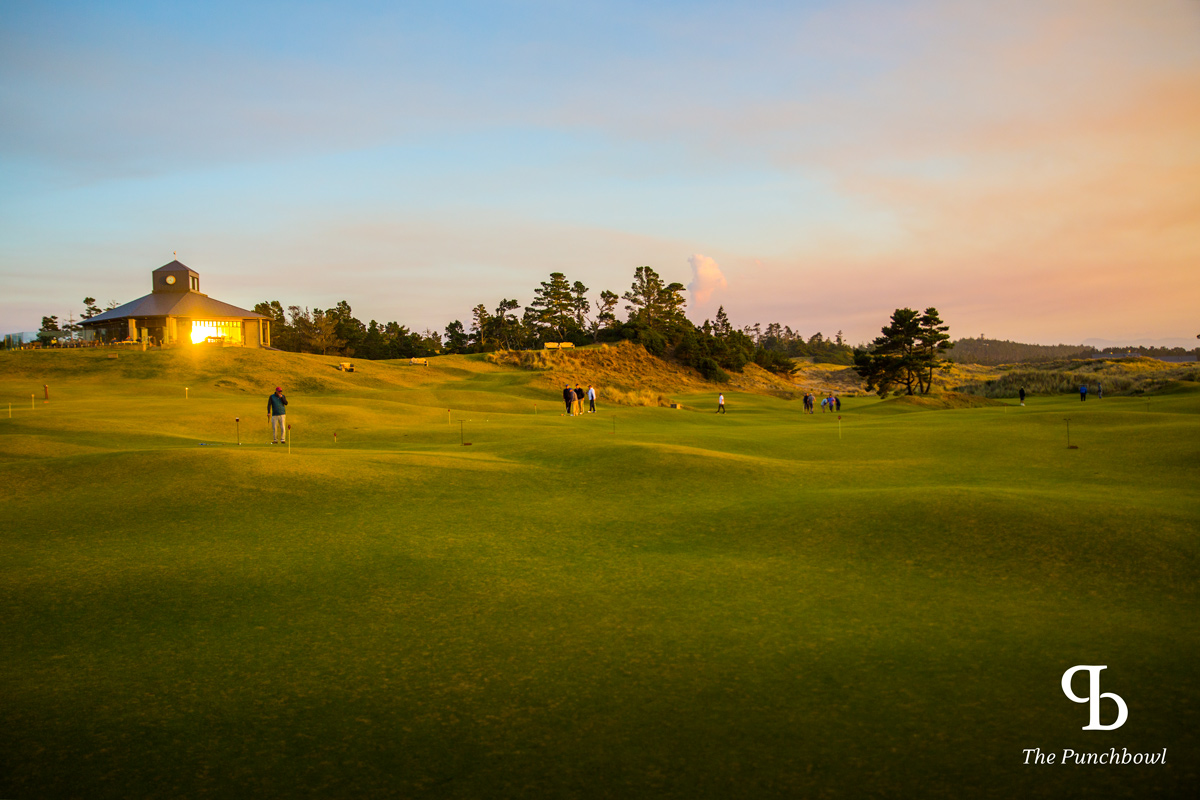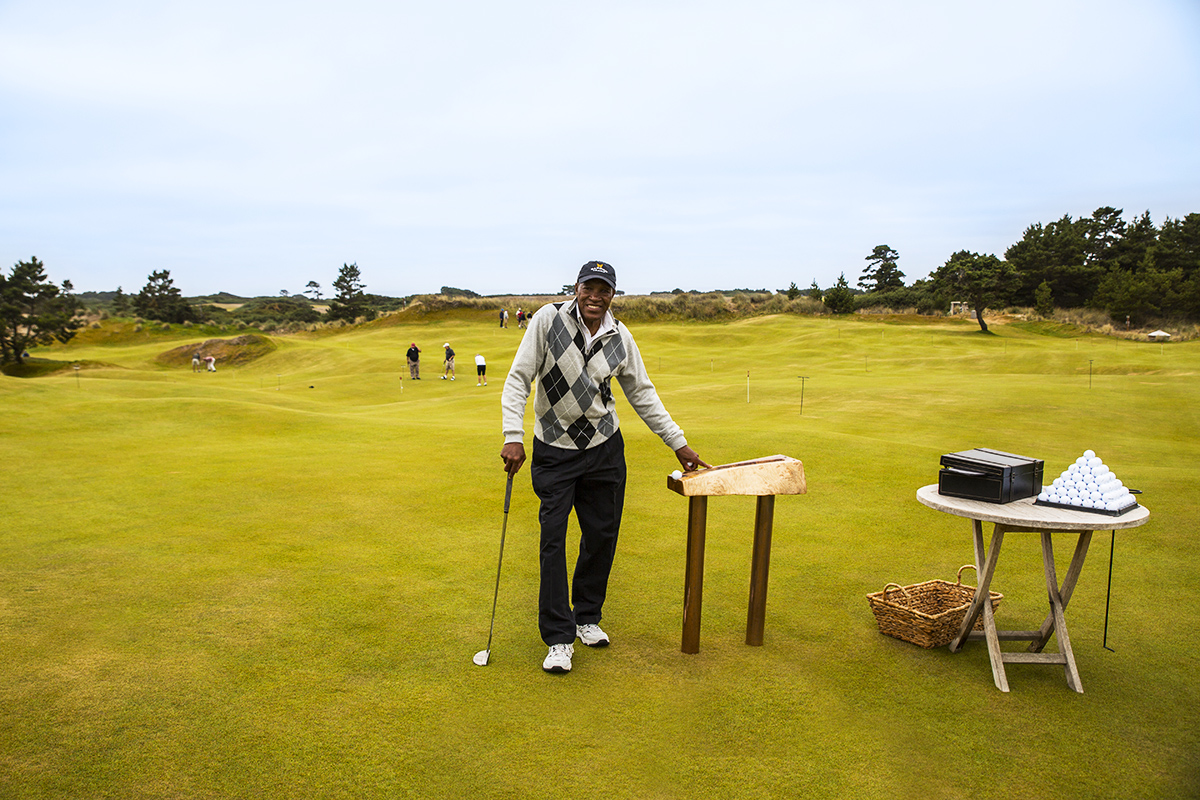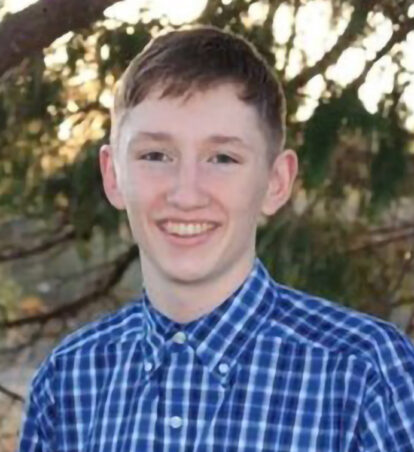CHANGES TO BANDON DUNES Pt. 1, AN INTERVIEW WITH DAVID MCLAY KIDD
David McLay Kidd’s work at Bandon Dunes is never quite done, something the architect, who designed the original course nearly 20 years ago does not at all seem to mind. Kidd recently returned to adjust the 11th, 15th, and 17th holes at Bandon Dunes. Each he says needed a tune-up to return them to their original strategic intent. We caught up with David recently in his DMK Golf Design office, set in his adopted hometown of Bend, Ore., about 250 miles northeast of Bandon, to talk about the changes and some of his other thoughts about Bandon Dunes. Below is an abridged version of the interview. To read our 2014 interview with David McLay Kidd, click here.
What was the impetus of the changes at the 11th, 15th, and 17th holes?
The nature of any golf course is that they adapt, they morph, because of maintenance practices, golfers, and especially the weather over on the coast. So over the last two or three years, I’ve been over at Bandon thinking, ‘It’s time for a little tune-up. There is stuff we should look at.’
A year and a half ago or so, I took the time to go around all the holes at Bandon and I wrote an architectural review. I took pictures and I really thought about the golf course, and what I had in my mind 20 years ago and how it looks and plays today. I gave that to Mike (Keiser) and I said, ‘Hey, I’d love to be able to chew off pieces of this review over the coming years. So last summer, Mike and I agreed that we would meet in October and we would look at the first few items. … He asked me, ‘Which things do you think we should do first?’ And I said the 11th, the 15th, and the 17th holes.
Were there other considerations?
As well as being 20 years on from finishing construction, we’re also two years shy of the (2020) U.S. Amateur coming to Bandon. Selfishly, I am obviously very hopeful that the final match will be played on the original Bandon Dunes golf course. If it doesn’t, it won’t be the end of my world. But I’d surely love it if it were. It would be a highlight to my career to have the U.S. Amateur played on one of my golf courses. Short of having a U.S. Open, a U.S. Amateur would be pretty high for me. So I am hopeful.
Is there a common theme among the three holes?
11, 15 and 17 all had strategic intents 20 years ago that my execution didn’t quite hit the mark on. When you are designing a golf hole, you almost always start designing from the green and work back to the tee, even though the player plays it from the tee all the way to the green. It’s like a chess match. If I’m a chess master, I’m probably trying to think how to get you into check and then checkmate. But I have to start at one side of my board. So as I designer, I am considering that checkmate position first, and then I’m bringing it back to the tee, where you as the golfer are starting your offensive push.
Walk us through the changes at the par-4 11th hole.
Coming in from the left side, the green is relatively open — there is a small pot bunker on the right-hand side — and the green is very long. You’ve got lots of room, and it falls away from you. So to get to any pin on that green you kind of have to come down the left-hand side, land it short if you’re in the winter time with the wind behind, or land it pin high in the summertime with the wind in your face. In order to defend that attacking line, I ran three bunkers across the left side of the fairway. What then happened was those three bunkers provided such good defense that no one could go down the left side. It was overly defended, so that pushed players out right where there are gorse bushes and they could lose a ball.
What I had to do is lessen the defense down the left-hand side to persuade players to go down that way, while letting that rough come back a little bit left of those bunkers, so people couldn’t avoid my strategy. Because they were avoiding it before. They were just hitting it in the rough. So what we did was we took out the middle of the three bunkers and we extended the fairway by maybe 15 yards. And then we put chunks of beach grass all through the rough, so the rough is now randomly unfair. You can hit down the left on purpose, and you can either be in a chunk of beach grass and barely find it or you could have an open lie. But to a good golfer, that’s not a chance worth taking. I’m trying to persuade them to go down the left side as I had originally intended by weakening my defenses a little bit and giving them a chance to go down the left side.

And the par-3 15th?
When I did 15, I knew that hole was relatively long, slightly uphill, into the wind, a small target, giant bunker on the front-right corner. Difficult hole, one of the most difficult on the course. However, I left these mounds down the left-hand side of the hole that I had intended to help a golfer hit a low-running shot and use those mounds to work a ball back into the green or to allow someone to hit it down the left side of that green and if the ball didn’t cup back onto the green it would be left, short left, or pin-high left, with a relatively recoverable shot off the green. That’s not how it worked out. ...
So what I suggested to Mike (Keiser), and he allowed me to do it, was I reduced all those mounds down the left-hand side to a mere hint of their former selves. Those mounds that were 6 feet high and really steep are now 18 inches high and very soft, so a running shot would have a chance of being slowly pushed to the right and actually fold onto that green. And a high shot would land and stay, and not be rejected into the bunker. All of that material from those steep mounds was then put on the left side of 15 green. Whereas before you’d have missed that green and the ball would roll down low into a hollow and you would be left with a lob wedge up and onto the top of a green that is falling away from you — and you could end up back in that bunker again — now that area is much flatter. It’s still below the green, but you could recover with a rescue club, a Texas wedge or maybe even with a putter.

The par-4 17th?
Almost the same issue as 11. The green is best approached down the right-hand side this time. It forces you to have to hit over the gulch, or at least the corner of the gulch, that is ahead of you. But that green is 80 yards long. It’s really, really deep. When I put in all those little pot bunkers on the left-hand side, it stopped anyone from hitting down the left. And if they hit it down the middle or the right with a driver they’d run out of space and run over the edge and they’d be in that long bunker and they were done. ...
To bring the original strategy of that hole to bear — and it’s important that people understand that this was my original strategy, it’s not changing it, it’s just putting back to what I had originally intended and hadn’t quite executed correctly — the two bunkers in the fairway that stuck out the most are now gone. The shapes that they sat in are still there, so you could get some wicked bounces. But you’re not going to end up in a pot bunker. Now my hope is that players will hit 3-woods and drivers at the bunkers on the far-left side and then they’ll use the slope of the fairway to work the ball back to the middle. It will naturally bounce the ball back to the middle, and now they’re hitting short- and mid-irons into that green if they attack it correctly. Because now they can aim 10 or 15 yards left of where they were able to hit before. And with a driver, they could get it down there. Obviously, if they hit a driver and they push it too much, they could still end up off the fairway right. So there is still a risk, but in match play, if you’re one down, you have nothing to lose, you better go for it. And hitting a 9-iron into 17 is a lot easier than hitting 6-iron.

What are your feelings on going back to Bandon, a course you will always be most known for, as you say?
It was funny this time going back there. The course is held in such reverence that I kind of had to remind myself that it was me who originally did it. I can’t think of a good analogy. Every decision that is out there is me anyway. I’m not renovating back to somebody else’s vision. I know what my vision was. And sometimes that vision has been lost because of wind and rain and players and maintenance. And sometimes it never got actualized as well as I’d have hoped. And now 20 years later I have the opportunity to fix it.
Is there a hole at Bandon Dunes where golfers often get the strategy wrong?
Hmm, that’s a good question. Yeah, there’s lots. The first hole. They step up and hit driver. If you’re a reasonably a good golfer, a driver puts you in that giant hole before you can get up on the green. I would much rather hit 7-iron from a flat lie looking at the pin than a wedge down in the hole and not able to see it. And it’s a lot less pressure to hit a very soft driver, or a smooth 3-wood, or even a rescue club up the first fairway than trying to kill a driver. So right there, they hit driver and now they’re told they’re 60 yards away. What do they go for next? An L-wedge! The club they need to hit the least. That is frustrating.
Then they get to (No.) 2. I say to them, ‘Hey, what yardage have you got?’ And they say, ‘Well, I’m 160.’ And I say, ‘OK, what would you hit 160?’ And they say, ‘Well, that’s my 6-iron.’ And I go, ‘OK, hit a smooth 5.’ And they go, ‘Well, what do you mean?’ There is a huge backstop back there and the pin is in the back half of the green. Overclub it. Use the slopes. Giving you a yardage to the pin is not that useful at Bandon Dunes. The yardage to the pin is the beginning of the intellectual thought process about how you’re going to get the ball close. The fact that it’s 160, you might only hit 120 in some situations, you might hit 180 in another situation, depending on the wind and the slopes and everything that is going to factor into what is going to happen next. And a lot of players don’t understand it.
Is that a product of American golfers not being used to the (links) style?
They’re so used to seeing target golf at their home club and on the PGA Tour week in and week out. So that’s a challenge. The next thing is to get them to understand that wedges are not your friend. I get to No. 3, and I hit driver off the tee, and then I hit a little mid-iron, 6-iron, to a hundred yards out. And I’m right in the middle of the fairway 100 yards out, and I’m playing with people who never played (Bandon) before, and I take my rescue club out and a long putt it 100 yards, and I put it to 6 feet and hole it for birdie. And they’re like, ‘Well, how’d you do that?’ And I say ‘Easily.’ It was a much simpler shot than trying to hit a wedge in a 20-mile-per-hour wind off a tight lie. This was a super-simple shot. It’s not even a half swing. It’s a long putt and the ball will run all the way on. And what’s the chance of me missing the green? Very slim. I might not get it as close as I would like, but the chances of thinning it or chunking it are pretty slim.
I could go on through the whole golf course where they just don’t stop to think, ‘What other options could there be that would have less risk and more reward?’

Is it still fun for you to go out to Bandon?
Oh sh*t yeah. And I fly my plane out there.
How often to you get to go back?
Quite often. I’d say three or four times a year. I might go back there next week and check up to see how things are. It takes me 40 minutes. And if Bandon Airport is clear, that’s 40 minutes here to Bandon landing. And it’s 10 minutes in a cab.

























 Click
Click 

















